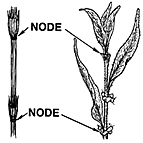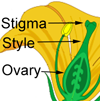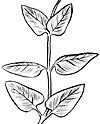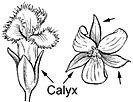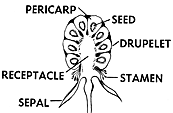Oahu False Ohelo
Wikstroemia oahuensis
Leatherwood family (Thymelaeaceae)
Native species ()
Plants of ‘akia, Wikstroemia, are easily recognized, though further identification of the species, about 12, found through the Hawaiian Islands is not so easy. Most species are shrubs, and only a few reach tree size. They have blackish or gray, often reddish brown, very tough bark with strong fibers, which served early Hawaiians as rope. These reputedly poisonous plants formerly were pounded into pulp and thrown into water to stupefy fish to aid in their capture. Plants of ‘akia are known by the mostly small narrow paired leaves, slender very tough twigs with strong fibers difficult to break, with raised triangular leaf-scars, small narrowly tubular four- greenish to yellow fragrant flowers, and small orange stone
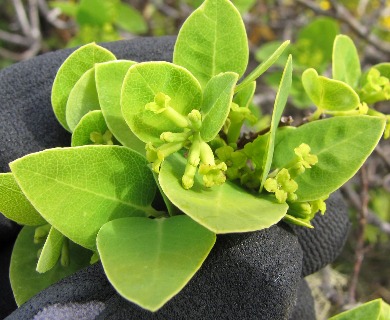
©2011 Forest And Kim Starr
Leaves hairless, with short light green leaf-stalks of less than 3⁄8 inch (1 ) long. Blades narrowly elliptical, 1 1⁄4–2 3⁄4 inches (3–7 ) long and 1⁄2–1 inch (1.3–2.5 ) wide, short-pointed at both ends, not slightly thick and leathery, upper surface dull green with side veins fine and inconspicuous, and lower surface dull light green.
Flower clusters (like ) are with short stalks less than 1⁄4 inch (6 ) long, which are curved down and Flowers several, short-stalked, very narrow, 3⁄8 inch (10 ) long and less than 1⁄8 inch (3 ) wide, light greenish yellow, without composed of tube (), with four spreading turned back, eight tiny four within tube and four in the and with elliptical single-celled very short and larger round
() one or two, oblong or egg-shaped, 1⁄2 inch (13 ) long and 5⁄16 inch (8 ) in diameter, enclosed by tube, with at from light yellow to orange, fleshy, bitter. Seed single, egg-shaped, 5⁄16 inch (8 ) long, pointed, blackish.
The wood of another species (W. sandwicensis Meisn.) is whitish and very soft, subject to blue stain.
Scattered in the understory of wet forests of Oahu, for example, Niu Valley, Mt. Konahuanui, and Poamoho Ridge, to 4600 ft (1402 ) elevation.
Range
Kauai, Oahu, Molokai, Lanai, Maui
Other common names
asasa, false ‘ohelo
Botanical
Wikstroemia basicordata Skottsb., W. degeneri Skottsb., W. elongata Gray, W. eugenioides Skottsb., W. haleakalensis Skottsb., W. isae Skottsb., W. lanaiensis Skottsb., W leptantha Skottsb., W. macrosiphon Skottsb., W. palustris Hochr.; W. recurva (Hillebr.) Skottsb., W. sellingii Skottsb., W. vaccinifolia Skottsb.
Plants of ‘akia are extremely poisonous if eaten, according to Degener (1930), though harmless to the touch. Root and bark were ingredients of a deadly drink for suicide or for execution of criminals by order of a chief. However, Arnold (1944) concluded that plants of this were not as poisonous as commonly reputed and possibly might not be toxic to humans. Baldwin (1979) also reported questionable toxicity, but recommended that the not be eaten.
The narcotic substance of this and a few unrelated plants served also as a fish poison. The bark and leaves were pounded into powder with stones on rocks near a tidal pool or stream. This powder was placed in double handfuls in the fibrous of a coconut leaf or in a twisted bunch of grass. Then the material was quickly inserted under a rock or in crevices where fish were expected. Within 10 minutes, the fish would swim about aimlessly or float on their sides and could be caught easily. Fortunately, the fish caught were edible.
